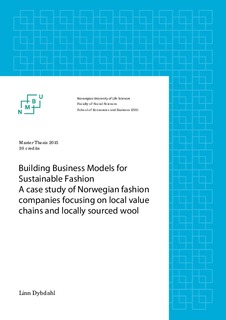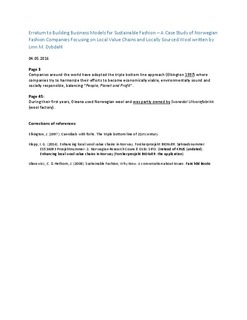| dc.description.abstract | The fashion industry is the world’s fourth largest and has many issues that contrast sustainable ways of balancing the needs of people, planet and profit. However, there is a shift where both start-ups and established fashion companies are trying to incorporate sustainability in their business models. This case study of five Norwegian fashion companies, looks at how they operationalise sustainability in their business models. By using the Sustainable business model framework as an analytical tool, the study investigates how the companies create and capture shared value. The companies use several sustainability approaches such as localising, renewable fibre, ethical made, slow fashion, product longevity and consumer education. In particular, localising the value chains and sourcing local fibre are explored as a sustainability approach. The companies show that localising can create, deliver and capture value both for themselves and their customers, as well as society and the environment. Thus, localising can be considered an approach to build sustainable business models. Yet, this requires that the company is attuned to its stakeholders and is determined to create shared value. Findings also reveal reasons not to localise, mainly concerning external conditions in the local area that are inconsistent with the company’s needs.In addition, the study compares how start-ups and incumbent companies build sustainable business models. The start-ups have the ability to be innovative and flexible since they are in a process of building their business models. However, they are limited by their access to resources. Established companies have larger organisations and more matured business models that result in slower and incremental changes towards sustainability. Nevertheless, the larger companies benefit from better access to resources and their impact can still end up be substantial since they reach a bigger market. With their advantages and shortcomings, connecting efforts by both start-ups and established companies can contribute in speeding up the process of making the fashion industry more sustainable. | nb_NO |


